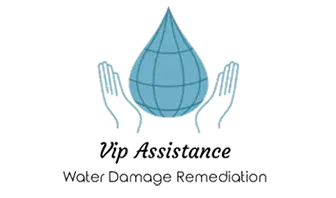When water enters your property, it can cause significant damage, disruption to your routine, and a great deal of stress. Whether it be because of heavy rains and flooding in Newhall or plumbing emergencies, the damage these disasters leave inside your home or workplace can leave you feeling overwhelmed.
Aside from causing you inconvenience, water damage also introduces risks of microbial growth to your residential or commercial property. Mold infestation, if left unaddressed, can quickly ruin your furniture, compromise your building’s structural integrity, and pose health risks to people in your home, especially those with compromised immune systems.
This is why the importance of preventing mold after water damage in Newhall shouldn’t be underestimated. But before we tackle the steps you can take to do this, let’s first look at what mold is and what conditions can aggravate its growth.
What Is Mold and How Does It Grow?
Molds are fungal species that play a crucial role in the natural environment, such as helping leaves or organic matter decay and enriching the soil. However, this ability to destroy organic materials becomes a problem when they spread where they shouldn’t — like in your home or workplace.
Unfortunately, it doesn’t take much for mold to propagate. It only needs the following:
- Moisture
- Oxygen
- Food source (organic materials like building materials, insulation, and wood products)
- Darkness
- Moderate to warm temperatures
These elements can be easily found in any home or commercial property. If you have recently experienced a plumbing emergency or flooding, taking quick action towards preventing mold after water damage is key to keeping microbial growth from growing inside your property.
5 Steps to Prevent Mold After Water Damage
- Address the Water Source
If water is pooling inside your home or workplace, the first and most important action is to find its source and address it. Emergencies like a gushing plumbing leak or an overflowing tub can quickly dump gallons of water into your property, so you have to act swiftly. While waiting for your plumber to repair the fixture, you can shut off the main water valve to prevent more water from pouring inside.
If you’re dealing with floodwater, using buckets is an inexpensive way to remove the excess water. If you want a less labor-intensive solution, you can use a wet-dry vacuum or a water pump. These items can be purchased or rented at hardware stores, and they’re designed to pump out gallons of water efficiently.
Whichever you decide, remember that the goal is to drain as much standing water out of your home as possible and to follow all written safety precautions. - Remove And Segregate Your Belongings
You’ll also have to dry out your property adequately, but you first have to remove your furniture and belongings from the wet surfaces.
Note that many of these items have been submerged in water. You won’t likely see problems with non-porous materials like glass, plastic, and metal. They can be easily cleaned and disinfected, so you can set them aside and store them somewhere safe for now.
However, for porous materials — or anything made of fabric, textiles, leather, or paper — you will have to choose which items are worth cleaning and salvaging.
Some can still be dried out, cleaned, disinfected, and monitored for any microbial growth, while those that have been wet for more than 48 hours or badly damaged need to be thrown away and replaced completely. - Dry Your Property
Once the water source is addressed, and your possessions have been tucked away, the next step is to dry out your property. It’s best to begin the drying process right away because the longer you wait, the more likely (and quickly) the mold will grow in the damp environment.
Here are some steps that can be taken within 48 hours to dry the areas affected by water damage:- Open the house to fresh air when the humidity is lower outside than inside. The circulating air will help the drying process.
- Use fans and dehumidifiers to remove excess moisture in the air (DO NOT use if mold may already exist)
- Use an indoor dehumidifier to remove the evaporating moisture inside.
- Clean and Disinfect Salvageable Items
It’s time to work on the items you’ve deemed salvageable earlier. However, they will have to be thoroughly cleaned and disinfected, since they came into contact with unclean water.
Soap and water can be used to scrub these items, as well as hard-surfaced walls and floors. But to get the best results, FEMA recommends washing all these surfaces with hot water and a non-ammonia detergent. Using a scrub brush for hard and rough finishes like concrete can help too.
After this, all surfaces should be disinfected with a 10% bleach solution. Leave the solution on the surface for at least 10 minutes before rinsing the area with water. - Contact a Water Damage Mitigation and Mold Remediation Company
The most critical step in preventing mold after water damage is to call in mold remediation experts in Newhall . The steps above can help put you on the right track toward preventing microbial growth. However, professionals trained to deal with mold will know how to take care of the problem for you safely and efficiently.
Aside from conducting swift water removal and effective mold remediation, they can also dry out your home or workplace completely after water damage.
Plumbing emergencies and natural disasters are already stressful enough. With this, it pays to remember that they can introduce mold infestations that can add to your concerns. Fortunately, following these steps to prevent mold after water damage swiftly can help you avoid this disaster. Certified water removal and mold remediation specialists in your area can help you protect your property and get things back to normal for you and your loved ones in no time.
Protect Your Home From Fire and Flood This Holiday Season in Newhall
